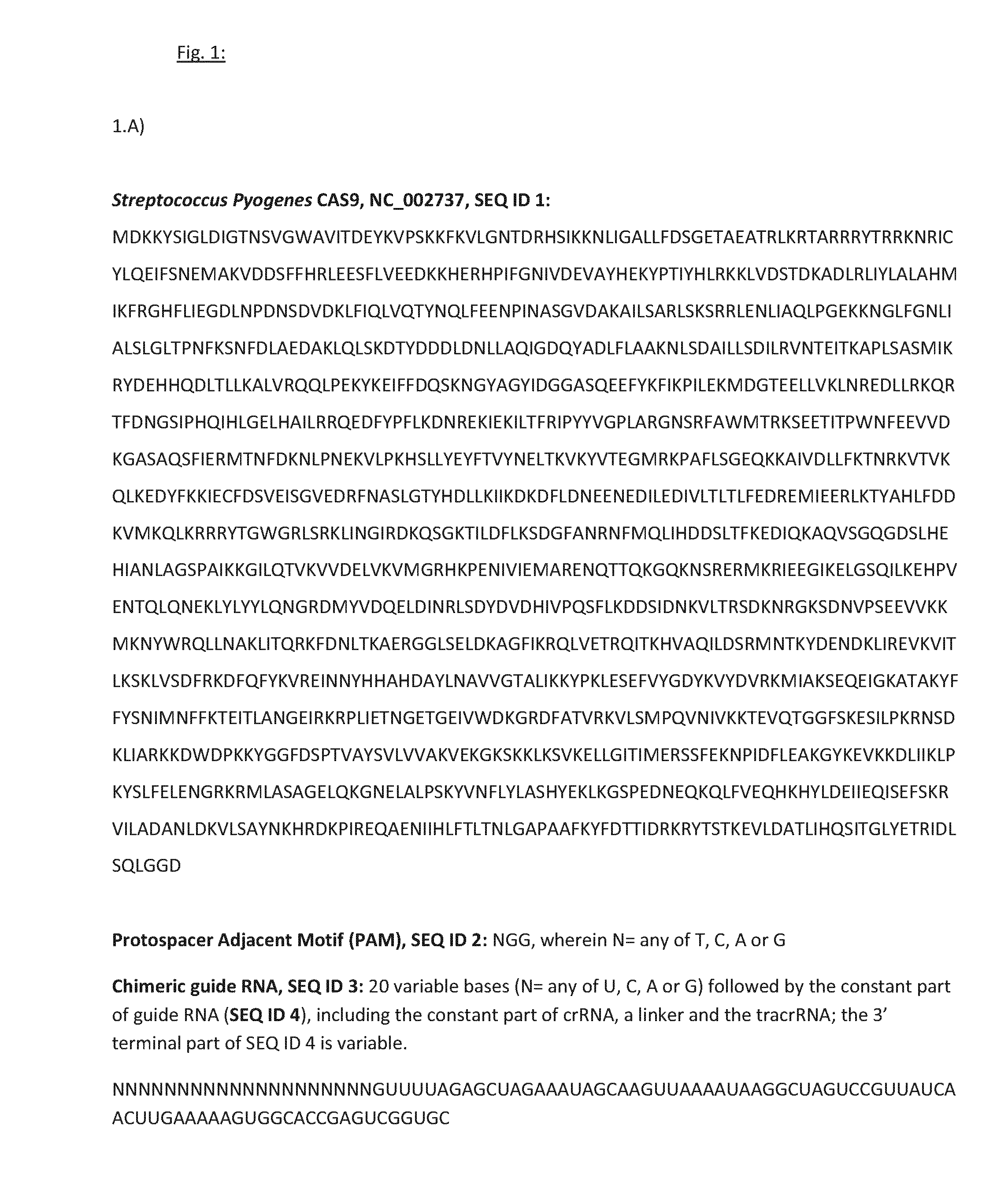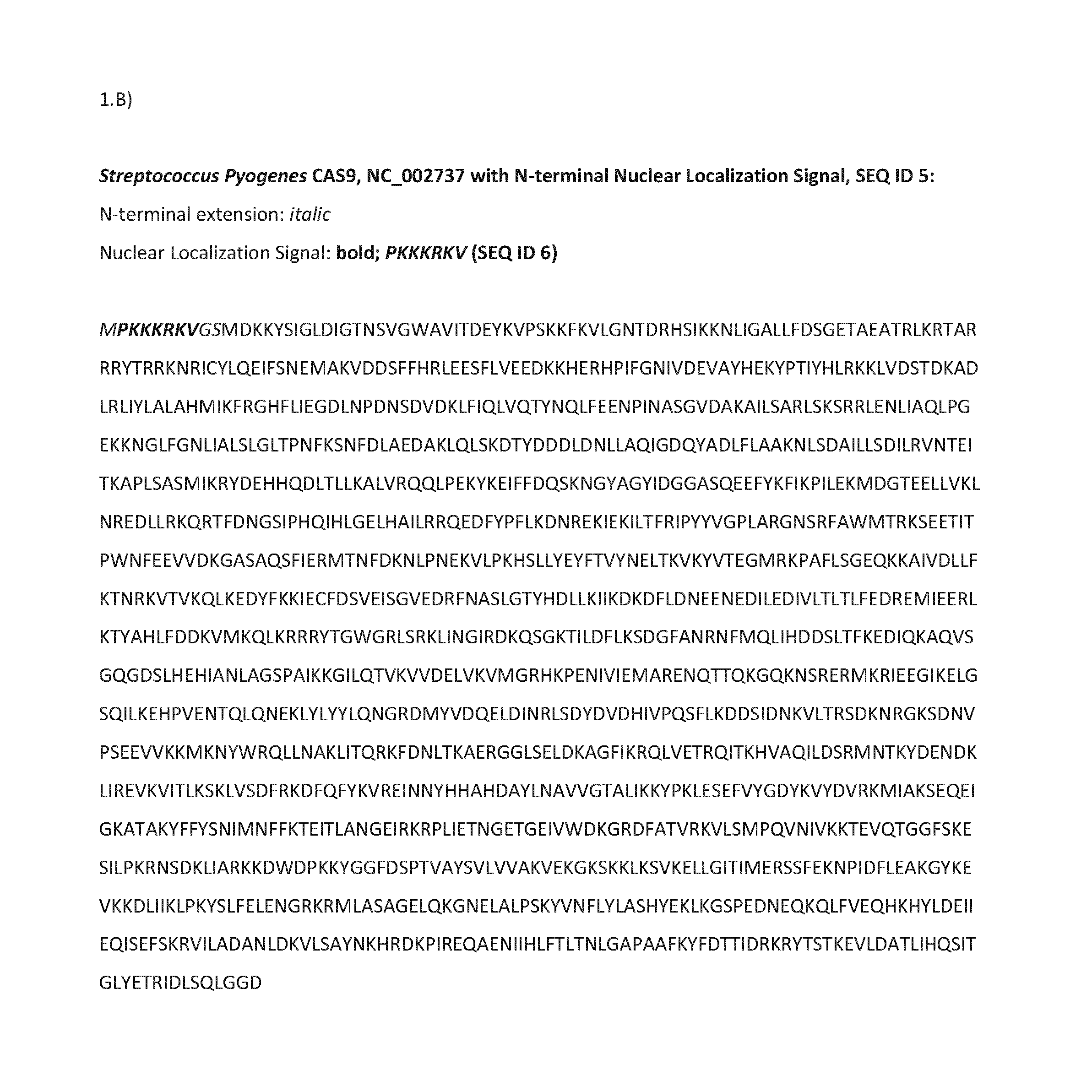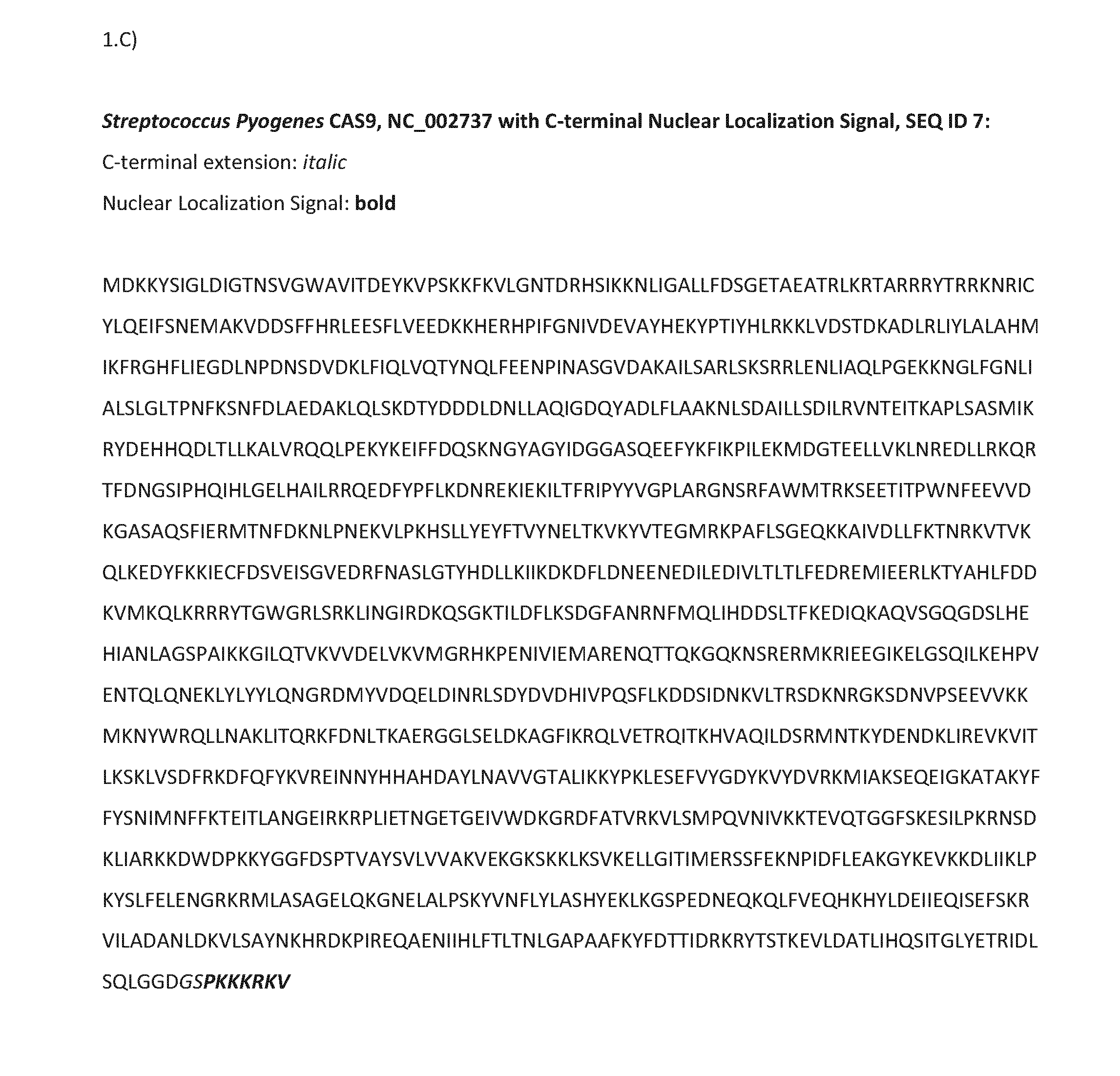Somatic haploid human cell line
a human cell line and haploid technology, applied in the field of haploid human cell lines, can solve the problems of -save mechanism, human survival turns out to be a nightmare, and the otherwise deleterious effect is eliminated, and achieves the effect of determining genomic or karyotypic stability
- Summary
- Abstract
- Description
- Claims
- Application Information
AI Technical Summary
Benefits of technology
Problems solved by technology
Method used
Image
Examples
example 1
n of an Exemplary Fully Haploid Human Cell
[0325]HAP1 are derived from the near-haploid human cell line KBM-7. They were unexpectedly obtained during reprogramming (compare [6]). Like KBM-7 cells HAP1 cells maintain a near-haploid status quite stably. In contrast to KBM-7, HAP1 cells adhere to the cell culture flask and HAP1 cells only possess a single copy of chromosome 8. Yet, like KBM-7 cells, HAP1 cells are diploid for a portion of chromosome 15: 61,105,002-89,890,003. Whole genome sequencing of KBM-7 cells indicates that both cell lines are heterozygous within that region. Spectral karyotyping (SKY) of KBM-7 cells revealed that the second copy of chr15: 61,105,002-89,890,003 is attached to chromosome 19 (see FIG. 6).
[0326]To obtain a fully haploid human cell line, we deleted the second copy of chr15: 61,105,002-89,890,003 using the recent published CRISPR / CAS9 system. CAS9 is a bacterial nuclease that can be directed by small RNAs to cleave specific loci of interest in human cel...
example 2
n of Further Clones Derived from Independent Transfection with Cas9 and Guide RNA
[0340]Abstract
[0341]Near-haploid human cell lines are instrumental for genetic screens and genome engineering as gene inactivation is greatly facilitated by the absence of a second gene copy. However, no completely haploid human cell line has been described, hampering the genetic accessibility of a subset of genes. The near-haploid human cell line HAP1 contains a single copy of all chromosomes except for a heterozygous 30 megabase fragment of chromosome 15. This large fragment encompasses 330 genes and is integrated on the long arm of chromosome 19. Here, we employ a CRISPR / Cas9-based genome engineering strategy to excise this sizeable chromosomal fragment and to efficiently and reproducibly derive clones that retain their haploid state. Importantly, spectral karyotyping and single-nucleotide polymorphism (SNP) genotyping revealed that these cells are fully haploid with no gross chromosomal aberrations ...
example 3
ation of Adherent Somatic Haploid Cells
[0385]The following example describes the methodology of diploidization.
[0386]Haploid human cells have a natural tendency to convert to the diploid state. Haploid cells are thus herein considered a “metastable” state that ultimately converts to the stable diploid state. In this experiment, this conversion is performed in a controlled way and triggered by suboptimal cell culture conditions, e.g. if cells are not passaged and supplied with fresh medium in regular intervals. Cellular stress would promote the diploidization of haploid somatic human cell lines, in particular when applied to adherent cells.
[0387]Following exposure to stress as induced by continued passage, e.g. following at least 25 numbers of passaging, single cell clones were isolated by limiting dilutions. To this end, a population of cells containing haploid and diploid subclones were trypsinized and diluted to ˜20 cells per milliliter. Cells were then seeded in 384 well plates (...
PUM
| Property | Measurement | Unit |
|---|---|---|
| karyotypically stable | aaaaa | aaaaa |
| length | aaaaa | aaaaa |
| fibroblast-like morphology | aaaaa | aaaaa |
Abstract
Description
Claims
Application Information
 Login to View More
Login to View More - R&D
- Intellectual Property
- Life Sciences
- Materials
- Tech Scout
- Unparalleled Data Quality
- Higher Quality Content
- 60% Fewer Hallucinations
Browse by: Latest US Patents, China's latest patents, Technical Efficacy Thesaurus, Application Domain, Technology Topic, Popular Technical Reports.
© 2025 PatSnap. All rights reserved.Legal|Privacy policy|Modern Slavery Act Transparency Statement|Sitemap|About US| Contact US: help@patsnap.com



